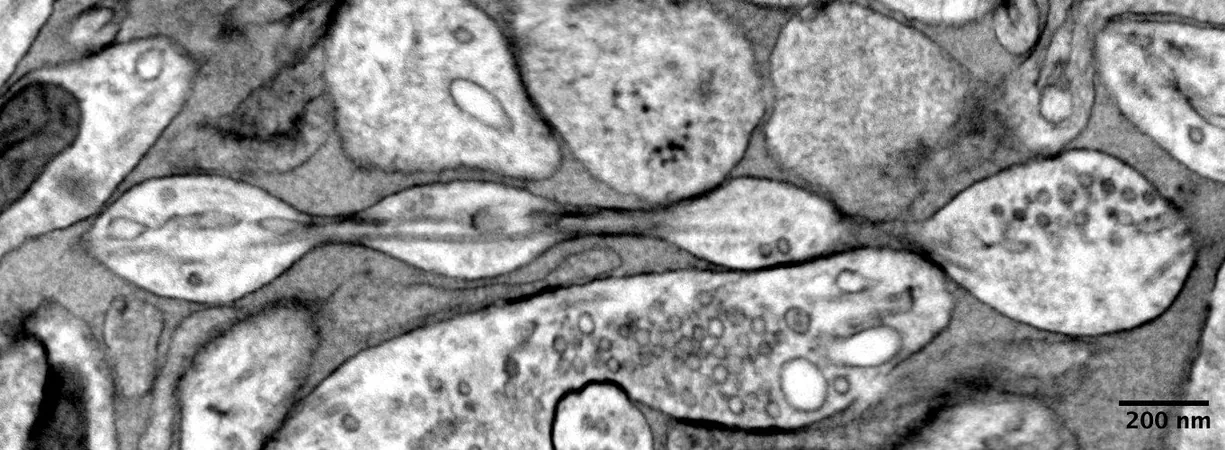
Groundbreaking Discovery: Scientists Make Strides in Eradicating Dormant HIV from the Body!
2024-12-02
Author: Amelia
Groundbreaking Discovery in HIV Treatment
Researchers in Canada have unlocked new insights into one of the most elusive aspects of HIV treatment: the dormant cells in the body that harbor this resilient virus. While modern therapies allow people living with HIV to lead long, healthy lives, the ultimate goal of eradicating the virus remains tantalizingly out of reach. New findings led by Éric Cohen, a prominent medical professor and director of the Human Retrovirology Unit at the Université de Montréal, provide hope in this ongoing battle.
Challenges of Dormant HIV Cells
Despite advancements in antiretroviral therapies, certain cells in the body contain latent forms of HIV that are resistant to these treatments. These hidden reservoirs prevent true eradication of the virus, leading to potential rebounds in viral load for individuals on long-term medication. Moreover, these reservoirs contribute to chronic inflammation, which can provoke a host of serious health issues, including cognitive impairments, cardiovascular problems, and increased cancer risks.
Innovative Research Approaches
Published in the esteemed journal *iScience*, Cohen's latest research dives into innovative therapeutic approaches that could tackle these reservoirs head-on. The focus has been on a class of molecules called second mitochondria-derived activator of caspases (SMAC) mimetics, which are currently being investigated in cancer treatments.
Mechanism of SMAC Mimetics
These SMAC mimetics possess two powerful properties. Firstly, they can "wake up" dormant HIV cells by triggering the expression of certain genes. Secondly, they can induce apoptosis, or programmed cell death, specifically in those cells that exhibit high levels of proteins that inhibit this form of cell death, such as the ones found in HIV reservoirs.
The 'Shock and Kill' Strategy
Utilizing the "shock and kill" strategy, Cohen and his collaborator Tram Pham have demonstrated that reactivating these dormant HIV cells allows for their subsequent elimination. Their research, in collaboration with the Chinese biopharmaceutical company Ascentage Pharma, involved testing a promising candidate named APG-1387, which is currently being evaluated in oncology clinical trials.
Promising Results with APG-1387
In both cell models and humanized mice, treatment with APG-1387 led to a noticeable reduction in the size of HIV reservoirs. Remarkably, when antiretroviral treatment was paused, the rebound of viremia was not only delayed but also diminished in the APG-1387-treated mice, offering strong evidence of reduced latent reservoirs.
Looking Ahead: Future Prospects
"This groundbreaking work shows that our strategy can be effective in living organisms without causing significant toxicity," Cohen emphasized. "We are revealing vulnerabilities within these viral reservoirs that could pave the way for their elimination."
Conclusion and Hope for the Future
Looking ahead, Cohen and his team are eager to integrate their findings with immune system-stimulating interventions, aiming for even more potent strategies to eradicate HIV reservoirs. As excitement builds around this critical research, the scientific community is hopeful that these discoveries may represent a pivotal step toward a future free of HIV, offering new possibilities not just for treatment but perhaps even for true eradication of the virus. Keep your eyes peeled; the fight against HIV is evolving, and we might be closer than ever to a solution!









 Brasil (PT)
Brasil (PT)
 Canada (EN)
Canada (EN)
 Chile (ES)
Chile (ES)
 España (ES)
España (ES)
 France (FR)
France (FR)
 Hong Kong (EN)
Hong Kong (EN)
 Italia (IT)
Italia (IT)
 日本 (JA)
日本 (JA)
 Magyarország (HU)
Magyarország (HU)
 Norge (NO)
Norge (NO)
 Polska (PL)
Polska (PL)
 Schweiz (DE)
Schweiz (DE)
 Singapore (EN)
Singapore (EN)
 Sverige (SV)
Sverige (SV)
 Suomi (FI)
Suomi (FI)
 Türkiye (TR)
Türkiye (TR)